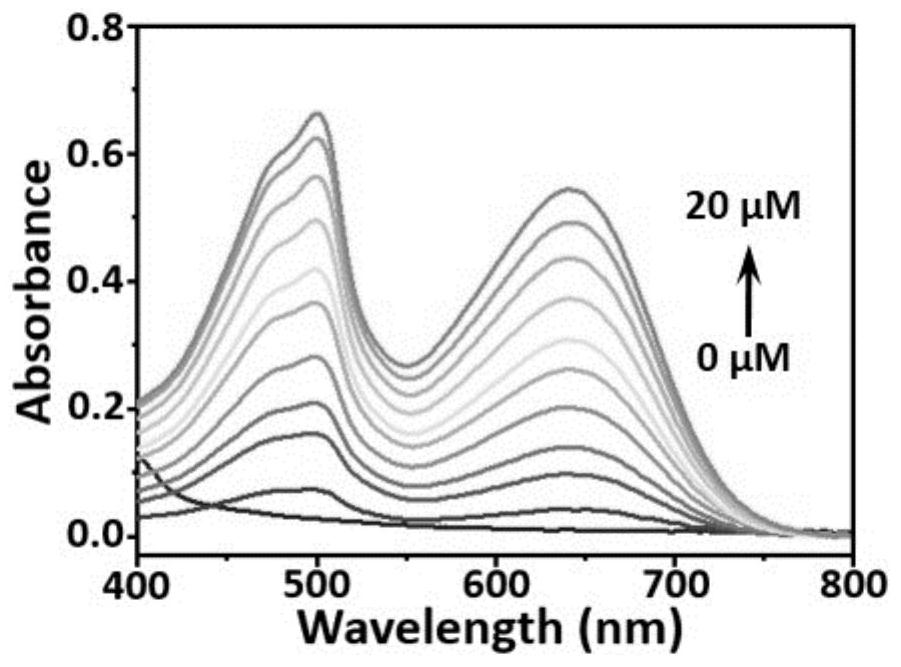A fluorescent probe compound for detecting cysteine and its application
A technology of fluorescent probes and cysteine, which is applied in the direction of fluorescence/phosphorescence, organic chemistry, luminescent materials, etc. It can solve the problems that the detection signal is interfered by the detection background, cannot distinguish Cys, and the yield is low.
- Summary
- Abstract
- Description
- Claims
- Application Information
AI Technical Summary
Problems solved by technology
Method used
Image
Examples
Embodiment 1
[0021] Formula I compound (synthesis of probe BCy-AC) synthetic route diagram is as follows:
[0022]
[0023] Add 1,1,2-trimethyl-1H-benzo[e]indole (105.0mg, 0.5mmol) and iodoethane (78.0mg, 0.5mmol) to 10ml of acetonitrile, and heat the mixture under reflux for 12 hours After filtration, the obtained solid matter and 4-hydroxyisobenzaldehyde (30.0 mg, 0.2 mmol) were heated to reflux in a mixed solvent of n-butanol and toluene (7:3, v / v) for 3 hours to obtain a green crude product ( Compound shown in formula II). The obtained crude product was separated and purified on a silica gel chromatography column (200-300 mesh) with ethyl acetate / methanol (3:1, v / v) as eluent, and the yield was 79%.
[0024] Take a 250mL round-bottomed flask, add 10mL of dichloromethane into it, then add acryloyl chloride (0.16mL, 2mmol) and a small amount of N,N-diisopropylethylamine, and stir at 0°C for 30 minutes under the protection of argon. 10 mL of dichloromethane and formula II (177 mg, 0....
PUM
 Login to View More
Login to View More Abstract
Description
Claims
Application Information
 Login to View More
Login to View More - R&D
- Intellectual Property
- Life Sciences
- Materials
- Tech Scout
- Unparalleled Data Quality
- Higher Quality Content
- 60% Fewer Hallucinations
Browse by: Latest US Patents, China's latest patents, Technical Efficacy Thesaurus, Application Domain, Technology Topic, Popular Technical Reports.
© 2025 PatSnap. All rights reserved.Legal|Privacy policy|Modern Slavery Act Transparency Statement|Sitemap|About US| Contact US: help@patsnap.com



